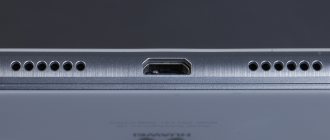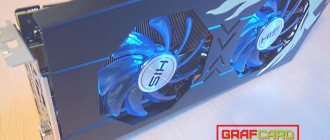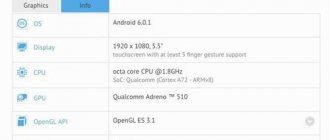Today we will talk about a number of AMD Radeon R7 200 series video cards. We will talk about four representatives: 260, 250 and 240 episodes. Although there are several individual options, the difference between them is not that great. We will definitely point out and review all the most noticeable differences so that you don’t have to think about what to buy again.
Price
Let's start right away with the price category of these cards. Despite the fact that they are all high-performance graphics processors and allow you to easily process large data streams, they are in the so-called economy sector. On average, you will have to pay up to 10,000 rubles for such a card, depending on the specific model and store, which is good news.
Although modern games are created exclusively for the newest video cards, and ultra settings only work on video processors from 50,000 rubles, this does not mean that cheap cards cannot replace them. The fact is that the AMD Radeon R7 200 series receives extremely positive reviews from users, which means they are in high demand.
All ATI Radeon video cards
Main characteristics
With more GPUs being released every day, buyers who don't follow the graphics card market won't know all the differences between ATI . To make the choice easier when purchasing video cards, a table has been compiled with the main characteristics of graphics processors (GPUs) from ATI .
It is important to note that starting in 2007, ATI and NVIDIA began to indicate real memory clock speeds. In the past, they specified double memory frequencies because DDR , and subsequent technologies ( DDR2, GDDR3 , etc.), allow the memory chip to transfer two units of data per clock cycle. Thus, a video card with a 500 MHz memory chip was marked as 1 GHz memory. To maintain compatibility in the table, we still indicate memory frequencies at twice the real one.
| ATI GPU | Core frequency | Memory frequency | Tire | Data transmission frequency | Pixels per clock | DirectX |
| Radeon 9200 | 250 MHz | 400 MHz | 128-bit | 6.4 Gb/s | 4 | 8.1 |
| Radeon 9200 Pro | 275 MHz | 550 MHz | 128-bit | 8.8 Gb/s | 4 | 8.1 |
| Radeon 9200 SE | 200 MHz | 333 MHz | 64-bit | 2.6 Gb/s | 4 | 8.1 |
| Radeon 9250 | 240 MHz | 400 MHz | 128-bit | 6.4 Gb/s | 4 | 8.1 |
| Radeon 9250 SE | 240 MHz | 400 MHz | 64-bit | 3.2 Gb/s | 4 | 8.1 |
| Radeon 9500 | 275 MHz | 540 MHz | 128-bit | 8.6 Gb/s | 4 | 9.0 |
| Radeon 9550 | 250 MHz | 400 MHz | 128-bit | 6.4 Gb/s | 4 | 9.0 |
| Radeon 9550 SE | 250 MHz | 400 MHz | 64-bit | 3.2 Gb/s | 4 | 9.0 |
| Radeon 9500 Pro | 275 MHz | 540 MHz | 128-bit | 8.6 Gb/s | 8 | 9.0 |
| Radeon 9600 | 325 MHz | 400 MHz | 128-bit | 6.4 Gb/s | 4 | 9.0 |
| Radeon 9600 Pro | 400 MHz | 600 MHz | 128-bit | 9.6 Gb/s | 4 | 9.0 |
| Radeon 9600 SE | 325 MHz | 400 MHz | 64-bit | 3.2 Gb/s | 4 | 9.0 |
| Radeon 9600XT | 500 MHz | 600 MHz | 128-bit | 9.6 Gb/s | 4 | 9.0 |
| Radeon 9700 | 275 MHz | 540 MHz | 256-bit | 17.2 Gb/s | 8 | 9.0 |
| Radeon 9700 Pro | 325 MHz | 620 MHz | 256-bit | 19.8 Gb/s | 8 | 9.0 |
| Radeon 9800 | 325 MHz | 580 MHz | 256-bit | 18.56 Gb/s | 8 | 9.0 |
| Radeon 9800 Pro | 380 MHz | 680 MHz | 256-bit | 21.7 Gb/s | 8 | 9.0 |
| Radeon 9800 SE | 325 MHz | 500 MHz | 128-bit or 256-bit | 8 Gb/s or 16 Gb/s | 4 | 9.0 |
| Radeon 9800XT | 412 MHz | 730 MHz | 256-bit | 23.3 Gb/s | 8 | 9.0 |
| Radeon X300 SE | 325 MHz | 400 MHz | 64-bit | 3.2 Gb/s | 4 | 9.0 |
| Radeon X300 | 325 MHz | 400 MHz | 128-bit | 6.4 Gb/s | 4 | 9.0 |
| Radeon X550 | 400 MHz | 500 MHz | 128-bit or 64-bit | 8 Gb/s or 4 Gb/s | 4 | 9.0 |
| Radeon X600 Pro | 400 MHz | 600 MHz | 128-bit | 9.6 Gb/s | 4 | 9.0 |
| Radeon X600XT | 500 MHz | 730 MHz | 128-bit | 11.68 Gb/s | 4 | 9.0 |
| Radeon X700 | 400 MHz | 600 MHz | 128-bit | 9.6 Gb/s | 8 | 9.0 |
| Radeon X700 Pro | 420 MHz | 864 MHz | 128-bit | 13.8 Gb/s | 8 | 9.0 |
| Radeon X700XT | 475 MHz | 1.05 GHz | 128-bit | 16.8 Gb/s | 8 | 9.0 |
| Radeon X800 SE | * | * | * | * | 8 | 9.0 |
| Radeon X800 | 400 MHz | 700 MHz | 256-bit | 22.4 Gb/s | 12 | 9.0 |
| Radeon X800 XL | 400 MHz | 1 GHz | 256-bit | 32 Gb/s | 16 | 9.0 |
| Radeon X800 GT | 475 MHz | ** | 128-bit or 256-bit | ** | 8 | 9.0 |
| Radeon X800 GTO | 400 MHz | 1 GHz *** | 256-bit | 32 Gb/s | 12 | 9.0 |
| Radeon X800 Pro | 475 MHz | 950 MHz | 256-bit | 30.4 Gb/s | 12 | 9.0 |
| Radeon X800XT | 500 MHz | 1 GHz | 256-bit | 32 Gb/s | 16 | 9.0 |
| Radeon X800XT PE | 520 MHz | 1.12 GHz | 256-bit | 35.8 Gb/s | 16 | 9.0 |
| Radeon X850 Pro | 520 MHz | 1.08 GHz | 256-bit | 34.56 Gb/s | 12 | 9.0 |
| Radeon X850XT | 520 MHz | 1.08 GHz | 256-bit | 34.56 Gb/s | 16 | 9.0 |
| Radeon X850 PE | 540 MHz | 1.18 GHz | 256-bit | 37.76 Gb/s | 16 | 9.0 |
| Radeon X1050 | **** | **** | **** | **** | 4 | 9.0c |
| Radeon X1300 HM | 450 MHz | 1 GHz | 128-bit or 64-bit or 32-bit | 16 Gb/s or 8 Gb/s or 4 Gb/s | 4 | 9.0c |
| Radeon X1300 | 450 MHz | 500 MHz | 128-bit or 64-bit or 32-bit | 8 Gb/s or 4 Gb/s or 2 Gb/s | 4 | 9.0c |
| Radeon X1300 Pro | 600 MHz | 800 MHz | 128-bit or 64-bit or 32-bit | 12.8 Gb/s or 6.4 Gb/s or 3.2 Gb/s | 4 | 9.0c |
| Radeon X1300XT | 500 MHz | 800 MHz (DDR2) or 1 GHz (GDDR3) | 128-bit | 12.8 Gb/s or 16 Gb/s | 12 | 9.0c |
| Radeon X1550 | 450 MHz or 550 MHz or 600 MHz | 800 MHz | 64-bit or 128-bit | 6.4 Gb/s or 12.8 Gb/s | 4 | 9.0c |
| Radeon X1600 Pro | 500 MHz or 575 MHz | 780 MHz | 128-bit | 12.48 Gb/s | 12 | 9.0c |
| Radeon X1600XT | 590 MHz | 1.38 GHz | 128-bit | 22.08 Gb/s | 12 | 9.0c |
| Radeon X1650 Pro | 600 MHz | 1.40 GHz | 128-bit | 22.40 Gb/s | 12 | 9.0c |
| Radeon X1650XT | 575 MHz | 1.35 GHz | 128-bit | 21.60 Gb/s | 24 | 9.0c |
| Radeon X1800 GTO | 500 MHz | 1 GHz | 256-bit | 32 Gb/s | 12 | 9.0c |
| Radeon X1800 XL | 500 MHz | 1 GHz | 256-bit | 32 Gb/s | 16 | 9.0c |
| Radeon X1800XT | 625 MHz | 1.5 GHz | 256-bit | 48 Gb/s | 16 | 9.0c |
| Radeon X1900 GT | 575 MHz | 1.2 GHz | 256-bit | 38.4 Gb/s | 36 | 9.0c |
| Radeon X1900XT | 625 MHz | 1.45 GHz | 256-bit | 46.4 Gb/s | 48 | 9.0c |
| Radeon X1900 XTX | 650 MHz | 1.55 GHz | 256-bit | 49.6 Gb/s | 48 | 9.0c |
| Radeon X1950 GT | 500 MHz | 1.2 GHz | 256-bit | 38.4 Gb/s | 36 | 9.0c |
| Radeon X1950 Pro | 575 MHz | 1.38 GHz | 256-bit | 44.16 Gb/s | 36 | 9.0c |
| Radeon X1950XT | 625 MHz | 1.8 GHz | 256-bit | 57.6 Gb/s | 48 | 9.0c |
| Radeon X1950 XTX | 650 MHz | 2 GHz | 256-bit | 64 Gb/s | 48 | 9.0c |
| Radeon HD 2400 Pro | 525 MHz | 800 MHz | 64-bit | 6.4 Gb/s | 40 ***** | 10 |
| Radeon HD 2400XT | 700 MHz | 1.6 GHz | 64-bit | 12.8 Gb/s | 40 ***** | 10 |
| Radeon HD 2600 Pro | 600 MHz | 800 MHz | 128-bit | 12.8 Gb/s | 120 ***** | 10 |
| Radeon HD 2600XT | 800 MHz | 1.6 GHz (GDDR3) or 2.2 GHz (GDDR4) | 128-bit | 25.6 Gb/s (GDDR3) or 35.2 Gb/s (GDDR4) | 120 ***** | 10 |
| Radeon HD 2900 GT | 600 MHz | 1.6 GHz | 256-bit | 51.2 Gb/s | 240 ***** | 10 |
| Radeon HD 2900 Pro | 600 MHz | 1.85 GHz | 512-bit | 118.4 Gb/s | 320 ***** | 10 |
| Radeon HD 2900XT | 740 MHz | 1.65 GHz (GDDR3) or 2 GHz (GDDR4) | 512-bit | 105.6 Gb/s (GDDR3) or 128 Gb/s (GDDR4) | 320 ***** | 10 |
| Radeon HD 3450^ | 600 MHz | 1 GHz | 64-bit | 8 Gb/s | 40 ***** | 10.1 |
| Radeon HD 3470^ | 800 MHz | 1.90 GHz | 64-bit | 15.2 Gb/s | 40 ***** | 10.1 |
| Radeon HD 3650^ | 725 MHz | 1 GHz (DDR2) or 1.6 GHz (GDDR3) | 128-bit | 16 Gb/s (DDR2) or 25.6 Gb/s (GDDR3) | 120 ***** | 10.1 |
| Radeon HD 3690^ | 668 MHz | 1.656 MHz | 128-bit | 26.5 Gb/s | 120 ***** | 10.1 |
| Radeon HD 3850^ | 670 MHz | 1.66 GHz | 256-bit | 53.12 Gb/s | 320 ***** | 10.1 |
| Radeon HD 3870^ | 775 MHz | 2.25 GHz | 256-bit | 72 Gb/s | 320 ***** | 10.1 |
| Radeon HD 3870 X2^+ | 825 MHz | 1.8 GHz | 256-bit | 57.6 Gb/s | 320 ***** | 10.1 |
| Radeon HD 4350^ | 600 MHz | 1 GHz | 64-bit | 8 Gb/s | 80 ***** | 10.1 |
| Radeon HD 4550^ | 800 MHz | 1.6 GHz | 64-bit | 12.8 Gb/s | 80 ***** | 10.1 |
| Radeon HD 4650^ | 600 MHz | 1 GHz or 1.4 GHz | 128-bit | 16 Gb/s or 22.4 Gb/s | 320 ***** | 10.1 |
| Radeon HD 4670^ | 750 MHz | 2 GHz (512 MB) or 1.746 MHz (1 GB) | 128-bit | 32 Gb/s or 27.94 Gb/s | 320 ***** | 10.1 |
| Radeon HD 4730^ | 750 MHz | 1.8 GHz | 128-bit | 28.8 Gb/s | 640 ***** | 10.1 |
| Radeon HD 4770^ | 750 MHz | 3.2 GHz | 128-bit | 51.2 Gb/s | 640 ***** | 10.1 |
| Radeon HD 4830^ | 575 MHz | 1.8 GHz | 256-bit | 57.6 Gb/s | 640 ***** | 10.1 |
| Radeon HD 4850^ | 625 MHz | 2 GHz | 256-bit | 64 Gb/s | 800 ***** | 10.1 |
| Radeon HD 4850 X2^+ | 625 MHz | 2 GHz | 256-bit | 64 Gb/s | 800 ***** | 10.1 |
| Radeon HD 4870^ | 750 MHz | 3.6 GHz | 256-bit | 115.2 Gb/s | 800 ***** | 10.1 |
| Radeon HD 4870 X2^+ | 750 MHz | 3.6 GHz | 256-bit | 115.2 Gb/s | 800 ***** | 10.1 |
| Radeon HD 4890^ | 850 MHz | 3.9 GHz | 256-bit | 124.8 Gb/s | 800 ***** | 10.1 |
| Radeon HD 5450^ | 650 MHz | 800 MHz (DDR2) or 1.6 GHz (DDR3) | 64-bit | 6.4 Gb/s (DDR2) or 12.8 Gb/s (DDR3) | 80 ***** | 11 |
| Radeon HD 5550^ | 550 MHz | (varies) | 128-bit | (varies) | 320 ***** | 11 |
| Radeon HD 5570^ | 650 MHz | 1.8 GHz | 128-bit | 28.8 Gb/s | 400 ***** | 11 |
| Radeon HD 5670^ | 775 MHz | 4 GHz | 128-bit | 64 Gb/s | 400 ***** | 11 |
| Radeon HD 5750^ | 705 MHz | 4.6 GHz | 128-bit | 73.6 Gb/s | 720 ***** | 11 |
| Radeon HD 5770^ | 850 MHz | 4.8 GHz | 128-bit | 76.8 Gb/s | 800 ***** | 11 |
| Radeon HD 5830^ | 800 MHz | 4 GHz | 256-bit | 128 Gb/s | 1,120 ***** | 11 |
| Radeon HD 5850^ | 725 MHz | 4 GHz | 256-bit | 128 Gb/s | 1,440 ***** | 11 |
| Radeon HD 5870^ | 850 MHz | 4.8 GHz | 256-bit | 153.6 Gb/s | 1,600 ***** | 11 |
| Radeon HD 5970^+ | 725 MHz | 4 GHz | 256-bit | 128 Gb/s | 1,600 ***** | 11 |
| Radeon HD 6390^ | 550 MHz | (changes) | 128-bit | (changes) | 320 ***** | 11 |
| Radeon HD 6850^ | 775 MHz | 4 GHz | 256-bit | 128 Gb/s | 960 ***** | 11 |
| Radeon HD 6870^ | 900 MHz | 4.2 GHz | 256-bit | 134.4 Gb/s | 1,120 ***** | 11 |
| Radeon HD 6950^ | 800 MHz | 5 GHz | 256-bit | 160 Gb/s | 1,408 ***** | 11 |
| Radeon HD 6970^ | 880 MHz | 5.5 GHz | 256-bit | 176 Gb/s | 1,536 | 11 |
| Radeon HD 6990** | 830 MHz or 880 MHz x2 | 1.25 GHz x2 | 256-bit x2 | 160 GB/s x2 | 1,536 x2 | 11 |
* ATI did not set default frequencies for Radeon X800 SE . Specifications depend on the video card manufacturer. ** Depends on model. There are Radeon X800 GT boards that use DDR, DDR2 and GDDR3 memory, and operate at different speeds accordingly. Models with GDDR3 can have a frequency of 980 MHz, and models with DDR reach 700 MHz. Models with GDDR3 memory have a frequency of 980 MHz and a 256-bit memory bus, a data transfer rate of 31.36 GB/s. *** There are models that use DDR memory, which means they operate at lower clock speeds. **** There are three versions of the video card using this chip with different characteristics, depending on the memory chip used. If the DDR volume is 128 MB , then the GPU frequency is 400 MHz, the memory frequency reaches 500 MHz, has a 128-bit memory interface and a maximum theoretical data transfer rate of 8 GB/s. If the DDR2 capacity is 128 MB , then the graphics processor reaches a frequency of 325 MHz, the memory frequency is 666 MHz, a 64-bit memory interface is used and the maximum theoretical data transfer rate is 5.3 GB/s. If the DDR2 capacity is 256 MB , the GPU frequency is 400 MHz, the memory frequency is 666 MHz, the memory bus is 128-bit and the maximum theoretical data transfer rate is 10.6 GB/s. ***** Shader modules are unified, which means that this chip does not have separate pixel shaders and vertex shader modules. On Radeon HD 2400 and HD 2600 , the graphics card manufacturer may use different memory frequencies (typically lower, thus resulting in lower performance compared to the reference model); The clock speeds published in the table are the official values of the reference model. Graphics cards based on PCI Express 2.0 , which doubles the available I/O bandwidth from 2.5 GB/s to 5 GB/s if the motherboard supports PCI Express 2.0. + Radeon HD 3870 X2, Radeon HD 4850 X2, HD 4870 X2 and HD 5970 use two Radeon chips running in parallel ( CrossFire ). Published specs are for one GPU only. When you compare different GPUs, you need to pay attention to all the characteristics. For example, the Radeon 9800 may appear slower than the Radeon 9600 Pro because it uses a lower clock speed, and the Radeon X700 Pro appears faster than the Radeon X800 because it uses a higher clock speed. However, the Radeon 9800 accesses its memory using a 256-bit memory bus and processes eight pixels per clock pulse, while the Radeon 9600 Pro accesses its memory using a 128-bit interface and processes four pixels per clock pulse. Same with the Radeon X700 Pro, the graphics card accesses memory using a 128-bit interface and processes 8 pixels per clock, while the Radeon X800 uses a 256-bit memory interface and processes 12 pixels per clock. Therefore, it is incorrect to compare GPUs only by their frequency. To find out the best performance, you need to compare frequencies and the number of pixels per clock. Memory performance is correctly compared through the data bus and frequency. GPUs labeled "SE" are the simplest and only access memory via a 64-bit bus. ATI uses the letters "XT" to indicate the fastest chip in the series, while its competitor, NVIDIA, uses the same markings to indicate the lowest-cost GPU in the series. "PE" stands for "Platinum Edition" and is a model faster than the "XT" and more expensive. Regarding DirectX , see the table below:
| DirectX | Shader Model |
| 7.0 | No |
| 8.1 | 1.4 |
| 9.0 | 2.0 |
| 9.0c | 3.0 |
| 10 | 4.0 |
| 10.1 | 4.1 |
| 11 | 5.0 |
Below is the minimum recommended power supply wattage for video cards
Pages: 1
Characteristics
We'll start with the most general characteristics of AMD Radeon R7 200 series video cards. All of them are manufactured using a technical process that determines the crystal size of 28 nm. The value is not too high, compared to other video cards, it could be better. Otherwise, this would lead to overheating of the card, but two built-in cooling coolers nullify this design flaw in the AMD Radeon R7 200 series. The photos in the article clearly demonstrate this. The only downside is that you will have to clean the cooling system more often.
AMD Radeon R7 200 series, the characteristics of which we are considering, are connected via the PCI-E x16 version 3.0 interface. Quite standard, but much better than AGP. When purchasing, just pay attention to this nuance.
Review and testing of the AMD Radeon R7 370 4096 MB video card: a hidden threat
Table of contents
- Introduction
- Specifications
- Review of ASUS Radeon R7 370 Strix (Strix-R7370-DC2OC-4GD5-Gaming)
- Appearance and dimensions
- Printed circuit board
- Cooling system
- Company Of Heroes II
- Metro Last Light
- Sleeping Dogs
- Sniper Elite III
- Thief (2014)
- Tomb Raider (2013)
- Total War: Rome II
- Far Cry III
- Crysis 3
- Battlefield 4
- Grand Theft Auto V
- The Witcher 3: Wild Hunt
Introduction
How long do you think GPU architecture can last?
A year, two, three or more? If you answered that up to three years, then you are very mistaken. No, I’m not a snob and I never have a blast with manufacturers, it’s just that some manage to survive in difficult situations with one architecture for almost five years. Of course, the market position is weakening, but the company is still strong and ready to develop something new. Yes, we are talking about AMD. Now difficult times are coming for it - the market for discrete accelerators is constantly shrinking, and an eternal competitor is not just stepping on its heels, but is already breathing in its back. And no, it's not Nvidia. For a long time, Intel was in the shadows, but recent reports from independent experts tell us the dominance of integrated solutions. And while the market niche between 50 and 100 dollars is eroding and disappearing, companies are retraining for more expensive and productive video cards.
And here the second question arises. Did AMD do the right thing by renaming the de facto existing line of models into something new? In my opinion, it is difficult to find fault here. After all, AMD has honestly reduced the cost of its graphics solutions in terms of the latter’s two to four-year lifespan. Let's say, in 2012, Radeon HD 7850/HD 7870 video cards were priced at $200-250, and two years later their cost dropped to $150, while the GPU frequency rose from 860 MHz to 925 MHz.
And in 2020, the same Pitcairn was revived in the form of the Radeon R7 370, but with 4 GB of memory and a frequency of 1 GHz. Quite an equivalent replacement. And now, using the example of the ASUS Radeon R7 370 Strix version, we will find out how good Pitcairn Pro is for $150.
Specifications
announcements and advertising
2080 Super Gigabyte Gaming OC for 60 rubles.
Compeo.ru - the right comp store without any tricks
RTX 2060 becomes cheaper before the arrival of 3xxx
Ryzen 4000
series included in computers already in Citylink
The price of MSI RTX 2070 has collapsed after the announcement of RTX 3xxx
Core i9 10 series is half the price of the same 9 series
The price of memory has been halved in Regard - it’s more expensive everywhere
| Name | Radeon R7 265 | Radeon R7 370 | GeForce GTX 750 Ti |
| Codename | Pitcairn Pro | Pitcairn | GM107 |
| Version | GCN 1.0 | GCN 1.0 | Maxwell 1.x |
| Technical process, nm | 28 | 28 | 28 |
| Size of core/cores, mm2 | 212 | 212 | 148 |
| Number of transistors, million | 2800 | 2800 | 1870 |
| Core frequency, MHz | 900 | – | 1020 |
| Core frequency (Turbo), MHz | 925 | 975 | 1085 |
| Number of shaders (PS), pcs. | 1024 | 1024 | 640 |
| Number of texture units (TMU), pcs. | 64 | 64 | 40 |
| Number of rasterization units (ROP), pcs. | 32 | 32 | 16 |
| Maximum fill rate, Gpix/s | 29.6 | 31 | 16.3 |
| Maximum texture sampling speed, Gtex/s | 59.2 | 64 | 40.8 |
| Memory type | GDDR5 | GDDR5 | GDDR5 |
| Effective memory frequency, MHz | 1400 | 1400 | 1350 |
| Memory capacity, GB | 2 | 2 | 2 |
| Memory bus, bit | 256 | 256 | 128 |
| Memory bandwidth, GB/s | 179 | 179 | 86.4 |
| Power, Pin connectors | 6 | 6 | – |
| Power consumption (2D/3D), Watt | -/130 | -/110 | -/60 |
| CrossFire/Sli | V | V | — |
| Announcement price, $ | 150 | 150 | 150 |
| Replacement model | Radeon HD 7850 | Radeon R7 265 | GeForce GTX 650 Ti |
Review of ASUS Radeon R7 370 Strix (Strix-R7370-DC2OC-4GD5-Gaming)
Appearance and dimensions
| Model | A, mm | B, mm | C, mm | D, mm | A1, mm | B1, mm | C1, mm |
| ASUS Radeon R7 370 Strix (Strix-R7370-DC2OC-4GD5-Gaming) | 170 | 108 | 35 | 75 | 214 | 113 | 40 |
| XFX Radeon R7850 Core Edition | 198 | 98 | 34 | 67 | 198 | 98 | 38 |
| Sapphire Radeon HD 7850 OC | 198 | 98 | 35 | 74 | 210 | 102 | 41 |
| Sapphire Radeon R7 265 Dual-X | 198 | 98 | 34 | 74 | 210 | 98 | 38 |
| PowerColor AX7850 2GBD5-DHV2 | 198 | 98 | 34 | 88 | 202 | 105 | 41 |
| MSI R7850 Power Edition OC | 203 | 98 | 34 | 74 | 212 | 107 | 39 |
| MSI R7 265 2GD5 OC | 220 | 98 | 34 | 95 | 220 | 113 | 37 |
| HIS 7850 IceQ X Turbo X | 198 | 98 | 34 | 86 | 219 | 113 | 39 |
| GigaByte GV-R7265WF2OC-2GD | 238 | 98 | 34 | 95 | 241 | 114 | 39 |
| GigaByte GV-R785OC-1GD | 198 | 98 | 34 | 96 | 225 | 109 | 38 |
| ASUS HD 7850-DC-1GD5 | 215 | 98 | 35 | 76 | 251 | 109 | 40 |
| ASUS HD 7850-DC2-2GD5 | 198 | 87 | 37 | 76 | 255 | 102 | 42 |
| ASUS HD 7850-DC2T-2GD5-V2 | 215 | 98 | 37 | 76 | 274 | 102 | 40 |
| AMD Radeon HD 7850 v1 | 240 | 98 | 34 | 63 | 248 | 98 | 38 |
| AMD Radeon HD 7850 v2 | 198 | 98 | 34 | 67 | 198 | 98 | 38 |
A
– length of the printed circuit board, excluding the cooling system and video output port strip.
B
– width of the printed circuit board, excluding PCI-E contacts and cooling system.
C
– height from the horizontal plane of the printed circuit board to the level of the upper surface of the cooling system.
D
– diameter of the fan/s along the outer radius.
A1
– the length of the printed circuit board, taking into account the cooling system (if it extends beyond the printed circuit board) to the video output port strip.
B1
– width of the printed circuit board, excluding PCI-E contacts, but with measurement of the cooling system (if it extends beyond the boundaries of the printed circuit board).
C1
– height, taking into account the back plate (if any)/radiator mounting screws to the level of the upper surface of the cooling system. If it is lower than the height of the rear strip of the video output ports, then the height to the top point of the strip is measured.
The table above shows all the models based on the Pitcairn graphics core and passed through my hands. We can say that the class is quite large and there are too many different types of boards to count.
But only now has it been possible to significantly reduce the dimensions of the printed circuit board - to 170 mm, and we will find out a little later whether the quality indicators of the components used have deteriorated. As for video outputs, here we have a standard set of a pair of DVI ports, one HDMI and one DispalyPort.
Printed circuit board
For ASUS developers, a favorite topic is the release of PCBs of their own design. Sometimes the original design surpasses the quality of the original source, sometimes it becomes a poor copy.
The Radeon HD 7850 had a black screen error. It was encountered by many buyers who reacted extremely negatively in the future to the offer to exchange the video card for the same one. Then the situation changed, but now chance intervened and many ASUS models have not recovered from the “black screen”. And only in the third revision it was possible to solve the problem. But time was lost and trust was undermined.
Instead of the Radeon HD 7850 (by the way, one of the samples with a burnt out and then replaced GPU is still lying on the shelf and remains 100% young and efficient) the R7 265 was released. In the near future, when we will prepare material on the evolution of video cards over the past few years, we will definitely dust it off and put it into a test system.
The Radeon R7 265 marks the beginning of a new era of design development. The number of phases has been reduced to a minimum (from five to four), they themselves are located in a vertical line in the front part (let me remind you that in the first revision of the HD 7850 five Dr.MOS phases were installed in a checkerboard pattern), power is supplied through a single 6pin connector.
And the ASUS PCB as a whole becomes a compromise between the desire to save money (install average-cost coils and affordable power transistors) and provide a video card with nominally good power.
A memory phase control device, or rather one – a uPI Semiconductor uP1540P PWM controller. The four phases of the GPU power supply are connected to a uP1608TK PWM controller with similar capabilities.
It is noteworthy that a similar combination has already been found on ASUS video cards and was perfectly recognized by the proprietary utility. Now it’s as if the whole world has conspired against overclocking AMD models. The rated voltage is 1.188 V, which is also the maximum available! Can you imagine what an exciting overclocking process awaits us?
Since the length of the printed circuit board is quite modest, and the cooling system extends beyond its perimeter, the convenience of connecting and placing the power connector comes to the fore. And here the new ASUS product is not perfect.
There is an indication of the supply of electricity - excellent, visual, commendable and useful, but by the time you get to the connector, you will scratch all your fingers. It was quite possible to turn it 90 degrees. It’s good that the tongue is located on the back of the printed circuit board, otherwise it would be impossible to turn off the power without knowledge of the Kama Sutra.
In the case of the tested video card, the memory capacity is 4 GB, while previously the standard was 2. The number of chips has not changed. There were eight of them, and they remain the same. The density changed accordingly - exactly twice.
Judging by the technical documentation, Hynix T2C operates at a frequency of 5000 MHz, and on the ASUS Radeon R7 370 Strix video card the memory operates at 5600 MHz, which corresponds to the specifications of the AMD Radeon R7 370. Theoretically, this is factory overclocking above the documented capabilities. But so far Hynix has not published data on more “dense” microcircuits, so I fully admit that at higher voltages they officially support frequencies of more than 5 GHz.
Before us is the Pitcairn graphics processor, previously known under the names Curacao/Trinidad. Its area is 212 mm2, and until now (what year in a row) it is produced using 28 nm technology.
The nominal frequencies of the ASUS Radeon R7 370 Strix are 1050 MHz for the GPU and 1400 MHz for the memory.
The graphics core contains 1024 unified shader processors, 64 texture units and 32 raster operations units. Its frequency in 3D mode on the ASUS video card has been increased relative to the reference value from 975 to 1050 MHz. ASIC crystal quality 72.3%.
Cooling system
The cooling system of most new ASUS video card models is semi-passive. This means that during partial load or idle mode the fans stop. With this scheme of operation of the CO, it is important to install high-quality turntables on the video card that can start as smoothly as possible from low speeds.
The video card in question is cooled by a medium-sized radiator and a pair of 75 mm fans.
Compared to the PCB, the heat dissipator is really large. But at its base there are only two heat pipes with a diameter of 6 mm.
The stated power consumption of the video card is 150 W, which means it produces the equivalent of this value.
I initially liked the simplicity of the design with widely spaced ribs. And direct contact over the entire surface should provide good results.
However, upon closer examination it turned out that the height of the radiator is very tiny - 13 mm. The focus is on large fan models with aggressive blades.
The main problem of a video card is choosing the correct speed of the turntables when the power system heats up. Look at the heatsink that cools the VRM area.
The area is tiny, the height is below the coils, the location is unfortunate (just behind the heat pipe, if you look at it from above). What awaits the VRM zone during long-term operation under load, or even worse during overclocking... we will soon find out.
An additional rib at the end of each blade, according to ASUS, contributes to a five percent increase in static pressure.
The T128010S fans are manufactured by Everflow and are based on plain bearings. This configuration works quietly, but with an abundance of dust and high temperatures, it does not last long. The speed adjustment range is from 0 to 3750-3800 rpm.
Monitor
As for displaying information on the screen, the driver of the AMD Radeon R7 200 series is very hot. If in the 240 series the video card supports only two monitors, then in all subsequent ones several possibilities appear.
- If you use DVI and HDMI connectors, you can connect up to 3 screens.
- With a DisplayPort connector, their number increases to four.
- When using the MST hub, you can connect as many as 6 monitors.
Moreover, these video cards support a resolution of 4096x2160. These video cards are suitable for both regular and widescreen screens. Thus, video cards are capable of supporting multi-monitor systems, and the software supplied with them will help the user with the implementation of their plans.
Manufacturers
The Radeon R9 270 video card is produced by the following manufacturers:
- ASUS
- Sapphire
- MSI
- GIGABYTE
MSI AMD Radeon R9 270 Gaming [R9 270 GAMING 2G]
The video card is based on a full-fledged Curacao graphics processor without cutting down on computing units. It is “supported” by 2 GB of memory with a 256-bit exchange bus. This is a perfectly balanced video card in terms of technical parameters, which will allow you to achieve consistently high FPS values in modern computer games at maximum settings.
Most MSI GAMING video adapters are factory overclocked, allowing you to achieve higher levels of performance without wasting time checking maximum frequencies and stability. Manufactured using the 28 nm process technology. GPU frequency – 900 MHz. Maximum resolution –
4096x2160. Video memory capacity – 2048 MB.
A special feature of MSI Gaming video adapters is the use of several frequency profiles with different fan speed settings. At the same time, the difference in operating frequencies is minimal in different modes.
Video card supports:
- OC Mode
- Gaming Mode.
- Silent Mode (minimum noise level).
The MSI AMD Radeon R9 270 Gaming is compatible with CrossFire X technology, which allows you to connect another adapter for increased performance. Two fans installed on the radiator help cope with temperature loads. To “recharge” the video card, use a connection to the power supply via a 6-pin adapter. Board length – 22 cm.
The closest price competitors are GeForce GTX 660 Ti, GeForce GTX 660.
TTX
Let's now talk about the technical component of the AMD Radeon R7 200 series. The characteristics of these video cards are such that they can easily support the most modern and demanding games. The exception is the AMD Radeon R7 240. But it was released quite a long time ago.
For example, the GPU frequency, which largely determines the performance of a video card, fluctuates around 1 GHz and can vary depending on the manufacturer. At the same time, for the 240 model this value is approximately 800 MHz.
The video card memory has GDDR5 and DDR3 formats. But at the same time, if the old models use only outdated memory, the new ones (260 series) contain exclusively modern technology.
The amount of video memory can also vary significantly within the same model. This also depends entirely on the manufacturer. However, despite all your efforts, you will not be able to find an AMD Radeon R7 200 series video card whose specifications include more than 2 gigabytes of memory. But this is not necessary if you are interested in modern games and their requirements.
Based on the memory format, the bandwidth of the AMD Radeon R7 200 series also follows. The characteristics that we get as a result demonstrate the performance capabilities of these video cards in the best possible way:
- The 250 and 240 series have bandwidth up to 72 GB/s;
- 260, 260x and 265 provide data transfer speeds of 96/104/180 GB/s, respectively.
As you can see, with many other parameters being equal, only the newest models win. However, with an average price of 7,700 rubles, buying this video card to upgrade your PC will not be a big problem.
Testing Radeon HD IGP and Intel HD Graphics
The era of modern integrated graphics solutions from ATI began several years ago, when the company announced the extremely popular Radeon Xpress 200 system logic set for AMD processors.
Of course, a few years earlier, the Canadian company pleasantly surprised the public with the announcement of the Radeon 9100 IGP with an integrated Radeon 9200, but at that time the system logic set was intended exclusively for Intel Pentium 4 processors and their derivatives. Radeon Xpress 200 was a slightly different solution, because it not only carried PCI-E support on motherboards, but was also for the first time intended for AMD processors, and not Intel, as was the case before. Having debuted in 2004, the Xpress 200 found its way into an incredibly large number of motherboards, being actively used in both desktop computers and laptops. Having received the most powerful integrated graphics core of the Radeon X300 class (which, by the way, was nothing more than the “most popular video card” Radeon 9600, but under PCI-E), the user could well save quite a lot on the card for a future upgrade, at first being content with the “built-in” .
Even though the video core was slightly reduced in clock speed compared to its discrete counterpart, and the video memory was drawn from the RAM, it was sufficient for users in full. One way to increase the performance of the integrated Radeon Xpress 200 solution was to solder 16- or 32-MB GDDR video memory chips on the motherboard. The cost of such improvements was meager, but they raised the overall performance quite noticeably, because in every game such “tuning” responded with extra FPS.
The Radeon Xpress 200 chipset lived for quite a long time, and until 2007, with some changes, it was actively used in various laptops and motherboards as the main video subsystem. True, the manufacturer managed to change the name of the built-in video core, first to Radeon X1100, and then to Radeon X1200\X1250, but the performance of this solution remained approximately at the same level as at the end of 2004.
It became clear that ATi/AMD integrated graphics required fundamental changes, especially since by that time DirectX 10 and shaders numbered 4.0 were already actively used in most mid-price and cheap solutions.
The endless evolution of the Radeon X200 finally culminated in a revolution when, in 2008, AMD introduced a line of completely new AMD 780G chipsets with an integrated Radeon HD 3200 video core. This time, the prototype for it was something between the Radeon HD 3450 and Radeon HD2400. The chip received 40 scalar processors, 4 texture units and 4 ROP's - such powerful hardware was enough to get the performance level of the Radeon X1600 and play most modern games, easily digesting even games on the Unreal Engine 3.
announcements and advertising
2080 Super Gigabyte Gaming OC for 60 rubles.
Compeo.ru - the right comp store without any tricks
RTX 2060 becomes cheaper before the arrival of 3xxx
Ryzen 4000
series included in computers already in Citylink
The price of MSI RTX 2070 has collapsed after the announcement of RTX 3xxx
Core i9 10 series is half the price of the same 9 series
The price of memory has been halved in Regard - it’s more expensive everywhere
And, of course, one of the main features of the new video chip was full support for DirectX 10, and even though the R620 video core itself was not able to run this API normally, the very fact that the built-in solution supported it was already a source of delight.
Nvidia even decided to catch up with the Canadians by announcing the GeForce 8200M chipset for AMD processors, but its video core was cut down too much compared to the discrete GeForce 8400 GS, and was far behind its competitor almost everywhere. A little later, the “greens” tried to rehabilitate themselves by announcing the GeForce 8300\9300, but it did not bring any fundamental changes - the performance level was only slightly higher, and there were relatively few motherboards based on it on open sale.
AMD, meanwhile, went ahead, releasing a whole line of embedded solutions in a couple of years - Radeon 3000, Radeon HD 3300, Radeon HD 4200, Radeon HD 4250 and Radeon HD 4290, satisfying almost all price categories. The recently released HD 42×0 line did not quite live up to the expectations of many users, who predicted as many as 80 stream processors and an increased number of texture and raster units for this integrated video chip. However, the drivers were gradually improved, and the performance of the Radeon HD 42×0 remained at the proper level, without requiring major hardware rework or improvements.
The industry giant and manufacturer of more than half of all graphics adapters, Intel, also did not sit idly by. Just this year there was a loud announcement of Core i3 and i5 processors with built-in Intel HD Graphics. Oddly enough, despite the slight increase in execution units in the GPU compared to the previous GMA 4500, Intel, by tweaking the drivers, was able to present very productive solutions comparable in speed to the Radeon HD 3200.
Nvidia, on the contrary, gradually stopped all work on the production of chipsets with IGP and switched to the production of inexpensive ION discrete graphics for mobile platforms. Of course, now you can still find motherboards based on GeForce 8200 and even GeForce 9300, but they are much less common than their 7x0G\8x0G competitors, and their performance leaves much to be desired. As for the GeForce 9300 chipset, it should be noted that it is used only in mITX boards; ready-made solutions based on it are not at all affordable.
Looking at the huge mass of motherboards with integrated Radeon HD 3x00 and HD 42x0, it would be very interesting to compare their performance with the most entry-level discrete video cards, answering the main question - are modern IGP solutions designed for games?
Today's race will feature both AMD GPUs and integrated Intel HD Graphics. In addition, the Hybrid Crossfire combination, which is so actively advertised by AMD, will be added to the total mass of tests, placing large logos of this technology in the most prominent place on motherboard boxes.
Not in testing
boards based on GeForce 8200 and 8300 will take part. Firstly, they have already been discontinued, secondly, they are not so widespread, and thirdly, they are produced exclusively for the AM2+ socket.
In addition, they lack ACC support and the function of unlocking processor cores, and the video core itself, being greatly reduced, does not reach modern entry-level discrete video cards. So the end user is unlikely to decide to purchase it, preferring AMD-based products, which have great advantages over Nvidia. Radeon HD 3200
(780G chipset as part of M4A78-VM) is the first of the most powerful integrated graphics solutions from AMD. Gained support for DirectX 10 and 40 scalar processors. Part of the RAM is used for video memory needs. The GPU clock frequency is 500 MHz.
Overclocking
We managed to overclock the video chip to 810 MHz, which in principle is a good result.
It was not possible to reach the coveted 1 GHz, but it’s somehow inconvenient to ask for more from a budget motherboard. Quite a normal result.
Radeon HD 4200
(785G chipset included in M4A785TD-V EVO) – this motherboard has a DDR2 video memory chip. Thanks to its use, one can hope for some speed increase compared to the HD 3200. The GPU itself operates at a frequency of 500 MHz, and unlike the 780G, it already supports DirectX 10.1 in hardware.
Overclocking
The overclocking potential of the integrated GPU can be fully appreciated - the chip easily conquered 1000 MHz and successfully completed all tests.
True, to achieve this result, just in case, we had to resort to active cooling and hang a 92 mm fan on the chipset radiator.
Radeon HD 4290
(890G chipset as part of Asus M4A89GTD Pro) – despite the fact that this GPU is built into the latest AMD 890G chipset, it has no differences from its younger brother HD 4200 (785G), except for the core frequency increased to 700 MHz. The chip also has SidePort memory – a 128 MB GDDR3 chip with a frequency of 1333 MHz.
Overclocking
There are no problems with overclocking again - the HD 4290 reached the 1000 MHz mark, thus equaling the frequency potential of the HD 4200.
A fan was also installed on the northbridge heatsink for more efficient cooling.
Intel HD Graphics
(as part of the Intel Pentium G6950 processor) is the most inexpensive representative of the line of new integrated GPUs. It operates at a frequency of 533 MHz, has 12 unified processors and 4 ROP's (although GPU-Z shows the presence of only 4 of them).
Faster versions of this GPU, soldered on the base of Core i3 and Core i5 processors, differ from this instance only in clock speed (733 MHz and 900 MHz, respectively). The number of functional blocks of the internal architecture is identical for all Intel HD Graphics.
Overclocking
The new promising video core from Intel did not lose face - successful overclocking to 1 GHz and stable operation in all test applications.
PowerColor Radeon HD 3450 256 MB DDR2
- “state employee” from three years ago.
Equipped with 256 MB of its own DDR2 memory operating at a frequency of 800 MHz. The chip is identical to that used in the integrated Radeon HD 4200\4290, and has 40 scalar processors, 8 texture units and 4 ROP's. The GPU clock frequency is 650 MHz.
Together with the HD 3450, we will try to find out how much system performance will increase when used in tandem with integrated Radeon HD video chips (Hybrid Crossfire combination).
Overclocking
It was not possible to overclock this video card at all. When the clock frequency of the GPU or video memory was increased, the image on the monitor screen literally began to crumble within a couple of seconds. Neither changing the thermal interface, nor improving the cooling system, nor (just in case) installing a video card in the PCI-E x8 slot helped. Well, not fate. Its main purpose in this article is to participate in the Hybrid Crossfire combination, and for its operation the standard frequency will be sufficient.
Sapphire Radeon HD 5450 512 MB DDR2
– this video card has twice as many execution units as any integrated video core from AMD based on RV620.
The video chip has 80 stream processors, 8 texture units and 8 ROP'S units. The video memory is 512 MB DDR2, operating at 800 MHz. The chip operates at 650 MHz. We will omit support for DirectX 11 - the video card is not designed for it. Before us is a plug for PCI-E, so let's see if its purchase is justified, and whether this plug can be replaced by an overclocked built-in video core.
Overclocking
The HD 5450 overclocked averagely - the chip reached 700 MHz, the memory reached 1000 MHz - in principle, a completely acceptable result. But I would like to get more from a 40 nm GPU - at least stable operation at 850-900 MHz.
Computing process
Having considered the general data available to the buyer on the price tag in the store, we move on to more precise figures. The characteristics of the AMD Radeon R7 200 series will allow us to say for sure which of these video cards is better than the rest.
We'll start with the number of universal processors. With their help, the color and shape of objects displayed on the screen are calculated. As you understand, the performance of the card as a whole greatly depends on this parameter. And here we can safely say that the 240 model is far behind its brothers in the series.
- AMD Radeon R7 240 has only 5 computing units, which is 320 processors.
- AMD Radeon R7 250 contains 8 blocks, and 250x already has 14.
- The AMD Radeon R7 260 has 12 blocks, the 260x has 14, but the 265 model contains as many as 16 computing devices. No explanation is even needed here.
Additionally
Of course, the technical characteristics of the AMD Radeon R7 200 series are very important. What technologies a modern video card can support determines its functionality and usefulness for the user.
The video cards of the reviewed series feel confident when working with Direct X 12.0 and Open CL 1.2. In addition, they interact perfectly with Open GL 4.3. And CrossFire technology has long ceased to surprise and is also perfectly supported by these cards. What are the differences then?
- The first stumbling block is AMD TrueAudio. This technology was created to maintain higher quality sound. But not all games use it, just as not all equipment is capable of supporting it. Of all the cards presented, only 260 and 260x support this technology.
- The VCE decoder, which is responsible for HD video, may also be a problem. It is only supported in cards 250x and higher.
Specifications
| AMD Radeon R9 M265X | ||
| Manufacturer | ||
| AMD | ||
| Series | ||
| R9 M200 | ||
| Architecture | ||
| GCN | ||
| Streams | ||
| shraders 640 | ||
| Core clock speed | ||
| 625 MHz | ||
| Memory frequency | ||
| 1125 MHz | ||
| Memory bus width | ||
| 128 Bit | ||
| Memory type | ||
| GDDR5 | ||
| Memory amount | ||
| 2048-4096 MB | ||
| DirectX | ||
| DirectX 11.1, Shader 5.0 | ||
| Technology | ||
| 28 n.m. |
Reviews
Finally, let's look at customer reviews about the AMD Radeon R7 200 series. Users' opinions on video cards of this model are quite clear. Most buyers are satisfied with the functionality they get for the money invested.
The advantages include silence and low temperature, despite the technological problems that we mentioned. But among the shortcomings, many buyers point to problems with installed software and drivers. In addition, when idle, the desktop may freeze and display a blue screen.
In general, you get fairly decent video chips for reasonable money, which completely pay for themselves. But, based on the shortcomings, users recommend adding money and buying a better card, or, conversely, taking GeForce, which are cheaper and have worse characteristics, but at the same time have better efficiency.
If you definitely decide to purchase a video card from this series, be sure to keep the purchase receipt. Most likely, you will need it to return your purchase to the store after about six months of use. AMD, to everyone's surprise, turned out to be an unfinished card with inflated expectations that were not met.











